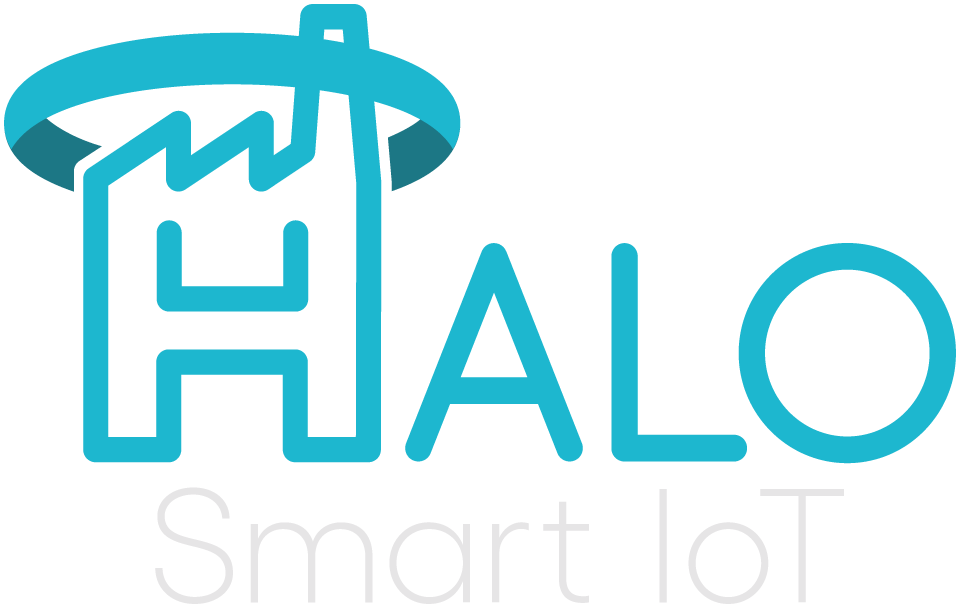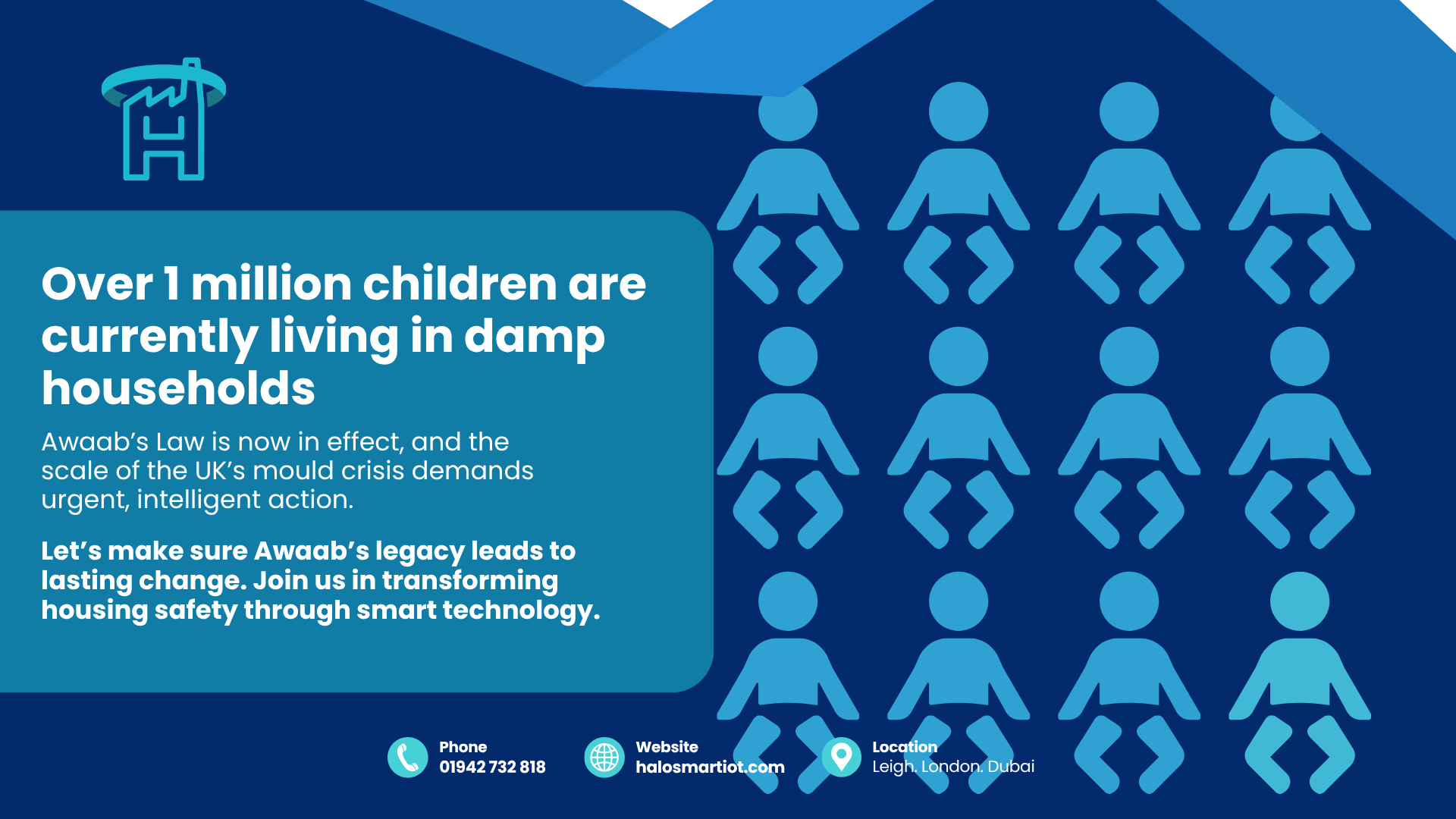No one should face fuel poverty at Christmas. Halo’s Fuel Poverty Reporting & IAQ Sensors empower housing providers to act. Create warmer, safer, and healthier homes this festive season.
On the third day of Halo Christmas | Halo’s Leak Detection Sensor
Frozen pipes don’t just ruin Christmas cheer, they cause costly damage and disruption. Halo’s Leak Detection Sensor helps you stay one step ahead. This winter, let smart technology do the watching, so you can focus on what matters most.
Awaab’s law and damp and mould: what challenges worry housing providers the most?
Awaab’s Law has brought housing safety into sharp focus. Damp and mould are no longer issues that can be left to linger, they demand immediate, accountable action. Head on over to join the conversation on ‘What’s your biggest concern with Awaab’s Law?’ over on our LinkedIn. Vote now and share your perspective, your insights help shape the conversation around safer, healthier homes. Halo Smart IoT Damp & Mould Solution At Halo Smart IoT, we know that compliance isn’t just about ticking boxes, it’s about protecting people, preventing risk, and building trust. That’s why our technology is designed to make housing providers proactive, not reactive. What We Offer: Smart Damp & Mould Solutions Halo Smart IoT is here to help you turn compliance challenges into proactive housing excellence, let us help you gain knowledge and confidence in your building.
On the second day of Halo Christmas | Halo’s 4-in-1 Sensor
This Christmas, give your properties the gift of compliance. With Awaab’s Law now placing stricter responsibilities on landlords to tackle damp and mould, Halo’s 4-in-1 Sensor is here to help. Give peace of mind for housing providers, stay compliant and provide healthier homes for your residents.
On the first day of Halo Christmas | Halo Smart Gateway
We’re unwrapping the power of the Halo Smart Gateway, the heart of smarter, safer and healthier living. From seamless compatibility to monitoring and control, Halo is here to make buildings work for you. Stay tuned as we count down 12 days of festive features, benefits and a few surprises that show why Halo is the gateway to smarter and happier homes .
50% OFF Selected Halo Sensors This Black Friday Weekend
This Black Friday weekend, take full control of your environment for less. Just look at these amazing deals to help you save money on monitoring, access control, staying compliant and making places and spaces more energy-efficient: 50% OFF selected Halo sensors with every Halo gateway order Our smart sensors monitor and control a range of environments: 50% OFF! 2 in 1 Sensor, Temperature and Door Monitor 50% OFF! IAQ (Indoor Air Quality) Wellbeing sensor Space Air Quality TVOC with Auxiliary CO2 50% OFF! Smart Plug These exclusive deals are available for limited time – contact the Halo Smart team today to secure your money-saving Black Friday deals. 📞 01942 732819 📩 sales@halosmartiot.com
Halo Smart IoT: Turn housing stress into housing security
It’s a shocking statistic – 40% of renters admit feeling stressed because of damp, mould and excessive cold in their homes. Behind that disturbing number are real families worried about their children’s health, individuals struggling with energy bills, and people facing the hidden costs of poor housing conditions. The impact on housing security goes far beyond slight discomfort: At Halo Smart IoT, we know that the right technology can be part of the solution to put things right. What’s more, it’s cost-effective, quick and easy to implement. Our smart monitoring systems give landlords and housing providers real‑time insights into property conditions, from humidity and temperature to early signs of mould risk. Fitted within minutes, Halo Smart’s wireless sensors can: Every renter deserves to enjoy a safe and healthy living environment, and every housing provider deserves the tools to make that possible. Learn how Halo Smart IoT can help reduce the stress for you and your tenants. 📞 01942 732819 📩 sales@halosmartiot.com
Can compliance be less complicated?
Awaab’s Law sets new standards for safer, healthier homes. But what about older housing stock where rewiring may not be practical? The introduction of Awaab’s Law has sharpened the focus on housing providers’ responsibility to ensure safe living environments in both new-builds and existing housing. For many, the biggest challenge lies in older housing stock where rewiring or disruptive upgrades seem increasingly daunting. This is where Halo Smart IoT sensors come in – super-fast to install, low profile, wireless with minimum disruption – making compliance achievable across even older estates. Halo Smart IoT sensors make compliance achievable in legacy housing: Technology should make compliance easier, not harder. By making compliance practical and easy across all housing stock, we’re helping housing providers protect tenants, meet their obligations and build trust with their tenants. Thanks to Halo Smart IoT there is no excuse – legacy buildings don’t have to get left behind. Learn more about how Halo can support you in achieving and staying compliant across your housing stock. 📞 01942 732819 📩 sales@halosmartiot.com
Awaab’s Law Is Now in Effect – The UK’s Mould Crisis Needs Smart Action
Awaab’s Law is now in effect, and the scale of the UK’s mould crisis demands urgent, intelligent action. The passing of Awaab’s Law marks a watershed moment in UK housing legislation. Named after two-year-old Awaab Ishak, who tragically died in 2020 due to prolonged exposure to mould in his social housing flat, the law now mandates that social landlords must investigate significant damp and mould within 10 working days and make properties safe within 5. Emergency hazards must be addressed within 24 hours. But the scale of the challenge is vast. According to BBC InDepth and government data: These are not just numbers. They represent real families, lives and health risks. Halo Smart IoT can help housing providers stay compliant and keep tenants safe. Our smart environmental monitoring systems offer: Whether you’re a housing association, local council, or private landlord, Halo Smart IoT helps you move from reactive to proactive, ensuring safe, healthy homes for all tenants. Let’s make sure Awaab’s legacy leads to lasting change. Join us in transforming housing safety through smart technology.
Full Lifecycle Support: From System Design to Continuous Monitoring
Continuous Monitoring is the cornerstone of any smart building technology solution that delivers lasting value. A successful IoT system requires more than a one-time install. From design to optimisation, Halo Smart IoT offers full lifecycle support, ensuring your infrastructure performs reliably and evolves with your needs. Whether you’re adopting smart building technology for the first time or enhancing an existing smart building management system, Halo has you covered. Understanding the IoT Lifecycle Approach IoT implementation is a journey that requires long-term care and attention. Much like maintaining a complex facility, each phase of the IoT lifecycle demands focus: Halo Smart IoT supports every stage to ensure systems remain efficient, secure, and scalable. Its IoT solutions for buildings are designed to be intuitive, interoperable, and future-proof. System Design: Building the Foundation The first step to long-term success is thoughtful system design. Halo works with clients to build scalable, secure, and fully integrated solutions tailored to their building environments. These intelligent building management systems are designed for real-world performance and long-term ROI. Security-First Architecture Halo Smart IoT is built with cybersecurity at its core. Key sensors such as ClimaSense Home and OpenSense use AES 128-bit encryption to protect data as it moves securely from device to cloud. By integrating encryption at the device level, Halo ensures that data integrity and privacy are maintained throughout the system. Seamless Integration Whether it’s API connectivity or wireless communication, Halo ensures compatibility with your existing infrastructure. This approach avoids siloed systems and simplifies management across multiple assets, aligning with modern building management systems. Implementation: Bringing IoT to Life Once the design is finalised, Halo oversees end-to-end implementation: Hardware is strategically placed for maximum coverage, and the Halo cloud platform is configured to match your operational goals, alerting preferences, and reporting requirements. Continuous Monitoring and Analytics Continuous Monitoring is central to Halo’s lifecycle strategy, offering complete visibility and control over your smart systems: Proactive Maintenance and Remote Support Halo reduces downtime and costs through: With Continuous Monitoring, even the smallest anomalies are flagged early, empowering maintenance teams to take immediate action. Optimisation and Scalability As your property needs evolve, so does your Halo system: System-wide Continuous Monitoring supports scalability by ensuring all components remain synchronised and effective as your network grows. Continuous ROI for Property Managers Halo delivers tangible value at every stage: Why Halo Smart IoT? What sets Halo apart is its full-spectrum support—from system design to Continuous Monitoring and continuous improvement. With built-in encryption, scalable infrastructure, and smart reporting tools, Halo provides a complete platform for safer, smarter property management. Whether you’re seeking an intelligent building management system or scalable IoT solutions for buildings, Halo delivers.










